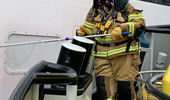Some business risks are so great that they cannot be insured by one insurer. For example, the risk of fire and collapse in construction projects and large buildings, accidents during international transport or business liability risks. In order to be able to insure these risks, there is the (large) business insurance market in the Netherlands; this is also called the co-insurance market.
Sharing risks
On the co-insurancemarket, major risks are offered under the direction of insurance brokers. Many policies are renewed or renewed every year on 1 January. In the run-up to that date, the renewal of policies, the market is busy. Supply (companies) and supply (insurers) are then brought together. And because the demand often involves large business risks, multiple insurers can subscribe to a certain percentage of a risk. Is there any damage? In that case, the insurers involved will pay the compensation proportionately. In practice, one or two insurers are leading and also the first point of contact for the broker and the customer (the company).
Insurability of business risks
If supply and demand on the co-insurance market is not in balance, this will result in sometimes shifts. For many years there was talk of a so-called 'soft' market, where companies were able to negotiate favourable conditions and lower premiums at the expense of insurers' results and, as a result, less attention and investment in prevention. In the course of 2019, this picture has started to tilt and there is talk of a shifting of the market, as a result of which insurers set stricter conditions , demand (better) prevention measures or ask for higher premiums . If companies do not agree with the insurers' offer, takingout the insurance becomes more difficult. Some risks and industries are more difficult to insure than others. We are talking about the degree of insurability. Recent Problemswith insuring recycling companies are an example of this.
Increasing the insurability of business risks is a joint responsibility of the insurer, the broker and the customer. Toensure that the annual renewal process runs more smoothly,the Verbond samen with the trade association independent advisors Adfiz and the Vereniging Nederlandse Assurantiebeurs (VNAB) have drawn up guidelines . The principles and guidelines have also been coordinated with the board of the Association of Dutch Risk and Insurance Managers (NARIM).
Prolongation process 2021
By starting the renewalprocess on time, the players in the co-insurance market get more time to exchange information. In this way, they can come to a more adequate insurance solution and make better agreements about the timely renewaland/or adjustment of the policies. More focus on the long(er) term relationship between the company - the 'customer' - and the insurers is also needed to prevent excesses. This should eventually lead to Better insurability and customer satisfaction in business damagemarket.
With the new principles and guidelines, not everything is solved immediately, but it is a good starting point. After publication in the autumn of 2020, the organisations involved will, among other things, identified bottlenecksand shared best practices and initial ideas for improvement. A first evaluation will take place in 2021 , after which further improvements will be made to the process.
In addition to improving the renewal process, insurers and brokers are working on modernizing and further professionalizing the co-insurance market. Theaim is to continue to manage and insure large, complex risks in an efficient and customer-oriented manner.



